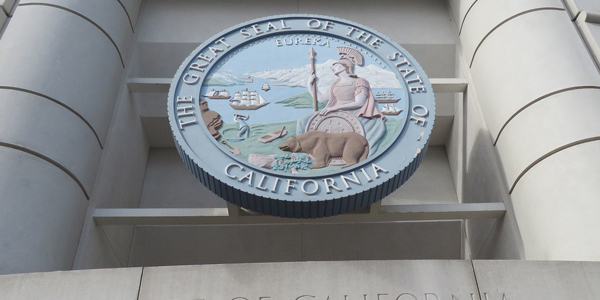The California Public Utilities Commission unanimously approved Pacific Gas and Electric’s Chapter 11 reorganization plan Thursday but warned it will now have regulatory mechanisms to end the utility’s century-old electric monopoly should it fail to ensure public safety.
Part of the proposed decision approved by the CPUC provides for a detailed six-step process of enforcement and oversight by the commission that could eventually lead to it placing conditions on — or revoking — PG&E’s certificate of public convenience and necessity (CPCN), which grants the utility monopoly status over 70,000 square miles of Northern and Central California, with its 5.4 million customer accounts.
“This is the time for a PG&E to emerge from bankruptcy that must be reborn with safety as its top priority,” Commissioner Clifford Rechtschaffen said. “Your future depends on it. There’s nothing more or less than that at stake.”
The CPUC decision also required PG&E to replace most of its board members and upper management, and to link executive compensation to safety performance. The utility agreed to break up its operations into eight regional entities and to allow a commission-appointed observer to report on its progress from inside corporate headquarters.
CPUC President Marybel Batjer said she believed the regulations will drive change at PG&E, but if they don’t, the commission is prepared to take further action.
“This transformed company must move from one that is held tightly in the grip of continual correction, of failures, to one that is a model company that is respected for how it serves its customers and community,” Batjer said.
The CPUC’s acceptance of PG&E’s Chapter 11 plan was necessary for it to exit bankruptcy, along with the U.S. Bankruptcy Court’s approval, which could come as soon as next week. (See related story, Improper Email Delays CPUC Vote on PG&E Plan.)
Last year’s Assembly Bill 1054 tasked the CPUC with ensuring that PG&E’s reorganization plan serves the public interest, including “the electrical corporation’s resulting governance structure … in light of [its] safety history, criminal probation, recent financial condition and other factors deemed relevant.”
Government investigations found faulty PG&E equipment started the November 2018 Camp Fire, the deadliest in state history, as well as devastating wildfires in 2017 and 2015 and the San Bruno gas pipeline explosion in 2010.
‘We Need a Public Utility’
The series of catastrophes prompted critics to call for a state takeover of PG&E, especially after the utility filed for bankruptcy protection in January 2019 as it faced massive wildfire liabilities.
Gov. Gavin Newsom was among those who threatened state intervention should the company fail to meet his demands for a new board and management, though he ultimately agreed to PG&E’s Chapter 11 plan with the CPUC’s added conditions.
Dozens of public speakers in Thursday’s hearing repeated calls for a public takeover, telling commissioners that PG&E’s Chapter 11 proposal would not do enough to prevent future wildfires or reform its safety culture. Public comments filled the first two-and-a-half hours of the four-hour voting meeting.
Many speakers said PG&E’s primary mission will remain earning profits and rewarding shareholders, the same behavior that they said led to the fires of 2017 and 2018. In April 2019, federal Judge William Alsup, who is overseeing PG&E’s criminal probation stemming from the San Bruno gas explosion, said the utility paid out $4.5 billion in dividends in recent years while neglecting tree trimming and other line maintenance, resulting in the wildfires.
Charlotte Quinn, with the Democratic Socialists of America, told the commissioners that PG&E needs to be accountable to voters, not shareholders.
“We need a public utility,” Quinn said. “The existing and proposed for-profit model is the cause of fires and explosions, death and destruction and old, unsafe infrastructure. Until the profit motive is removed, the energy grid will remain unsafe for communities, just as it has been proven over and over again.”
Commissioner Martha Guzman Aceves said she shared such concerns but was reassured by a bill in the State Legislature that could provide a means for turning PG&E into a public-benefit corporation called Golden State Energy. The measure, Senate Bill 350, by Sen. Jerry Hill, was scheduled for a hearing Thursday in the Assembly Utilities and Energy Committee.
Statutory authority for replacing PG&E as a for-profit monopoly has been lacking, Guzman Aceves noted.
“Fortunately today, through the governor’s leadership and the legislative leadership, we have Sen. Hill’s bill, SB 350, that will soon provide us as a state with the tools to replace PG&E with a customer-elected public option should they fail,” Guzman Aceves said. “This bill will give ratepayers a genuine alternative. If PG&E fails to provide safe, reliable and affordable energy service, then the commission could petition the court to appoint a receiver or revoke PG&E’s CPCN.”






